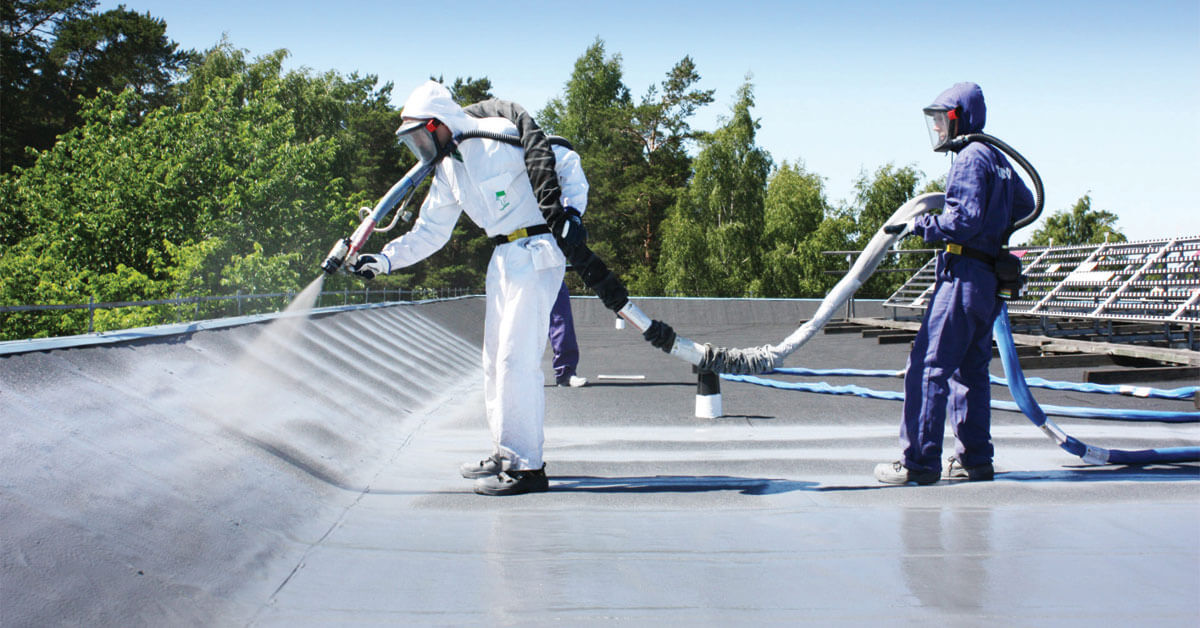High Temperature polyurea are specialized materials. These coatings are designed for temperatures of 300-1400F. Selection depends upon the temperature profile and type of substrate that is to be painted. Understanding how they work and how to specify and apply them will help to ensure proper service and eliminate such problems as disbondment, discoloration and early failure.
BASICS: For high temperature applications, the coating system is expected to retain its appearance and integrity while protecting metal substrates at temperatures above (300F) (150C). The coating may be subjected to corrosion. In general, coatings are made up of a resin or vehicle, pigments and solvents. Conventional coatings, such as alkyds, use organic vehicles as pigments binders. However, these vehicles may decompose under heat, and this can cause premature failure.
To overcome this problem, high temperature coatings use heat resistant resins. These resins compounds have excellent thermal stability and resistance to oxidation. They are also essentially transparent to, and resistant to degradation by ultraviolet radiation.
The combination of heat resistant properties and weathering characteristics make these resins and coatings ideal for formulation into heat resistant maintenance coatings. Other coatings can be formulated with substitute resins which will reduce cost per gallon while improving properties such as adhesion, abrasion resistance and curing time.
The pigments used must be compatible with the resin and should not decompose at high temperatures. Pigments must also be color stable over the entire working temperature range of the coating. Thermally stable pigments keep their color over time, unlike other pigments on the market and so are used in high temperature coatings. Traditionally, only black and aluminum colored heat stable pigments were available. Now, there is a wide range of colors, including pigments that will support numerous color matching options.
OPERATING CONDITIONS: In specifying a high temperature coating system, the factors affecting performance must first be assessed. In addition to temperature, these include the nature of the substrate, its structure, stress due to thermal cycling, weathering, surface preparation and application limitations, corrosives and life expectancy of the coating.Two common pitfalls are made in specifying: 1. Assuming that a single high temperature coating will be right for all applications. 2. “Overspecifying” the coating. Too often, the substrate skin temperature is guessed at, and the guess is made on the high side for safety. Thus, the coating system specified may be suitable for operating temperatures much higher than those that will be encountered. Also in overspecifying, the coating may not dry/cure properly. High Temperature coatings usually require curing at elevated temperatures to achieve optimum film properties. A threshold temperature must be achieved before the coating fully cures/crosslinks or polymerize. For this reaction, a coating rated at (1000F/540C) will not perform satisfactorily at a temperature below (450F-230C). Curing will never take place and then is a matter of time and temperature.
MEASURING TEMPERATURE: Correct application and substrate conditions are critical to writing a specification. Both the temperature range and the maximum temperature need to be identified. Surface thermometers and heat guns are now much more advanced today and are the most accurate to take temperature measurements. Temperature readings taken at the most accessible locations can be misleading. For example, at ground level, a stack may be heavily line with refractories. It will have skin temperature much lower than its upper reaches where the lining might be thinner. When contact measurements cannot be made, other methods must be used. One is infared emissivity measurement. An infared scan provides accurate temperature profiles of such equipment as smelters, blast furnaces, pipelines and kilns. Stack gas inlet temperature can be determined from the process control temperature recorder. Once this temperature is known, the exit gas temperature can be found for an unlined stack of known height and diameter.
RANGE OF APPLICATIONS: There are two broad categories of high temperature coatings: those for service below (500F-260C) and those for service above (500F-to 1200F-650C). Formulations of these coating systems change when the temperature requirement exceeds these temperatures. Coatings must be formulated specifically for the application and operating temperature of the substrate to maintain this broad range of temperature, number of coats needed and rapid rise in temperature based on what is being painted. In cases where this is an extremely rapid temperature rise, it is unlikely that any coating will work. This is because of the thermal stress caused by the difference in coefficients of expansion between the substrate and the coating.


